Captain Samuel Nicholas formed two battalions of Continental Marines on 10 November 1775 in Philadelphia as naval infantry. Since then, the mission of the Marine Corps has evolved with changing military doctrine and American foreign policy. The Marine Corps has served in every American armed conflict and attained prominence in the 20th century when its theories and practices of amphibious warfare proved prescient and ultimately formed the cornerstone of the Pacific campaign of World War II. By the mid-20th century, the Marine Corps had become the dominant theorist and practitioner of amphibious warfare. Its ability to rapidly respond on short notice to expeditionary crises gives it a strong role in the implementation and execution of American foreign policy.
The Marine Corps accounts for around six percent of the military budget of the United States. The cost per Marine is $20,000 less than the cost of a serviceman from the other services, and the entire force can be used for both hybrid and major combat operations; that is, the Marines cover the entire Three Block War. However, these per capita costs do not account for support provided by other branches, such as the Navy's amphibious warfare ships and the long range air transport of the USAF. However given expected defense budget cuts, the Marines may be the service best positioned for "fielding cheap options for an uncertain world." The Marine Corps budget is comparably well handled with a tiny fraction of the Anti-Deficiency Act violations of any of the other three major branches.
The United States Marine Corps serves as an expeditionary force-in-readiness. As outlined in 10 U.S.C. § 5063 and as originally introduced under the National Security Act of 1947, it has three primary areas of responsibility:
This last clause, while seemingly redundant given the President's position as Commander-in-chief, is a codification of the expeditionary duties of the Marine Corps. It derives from similar language in the Congressional acts "For the Better Organization of the Marine Corps" of 1834, and "Establishing and Organizing a Marine Corps" of 1798. In 1951, the House of Representatives' Armed Services Committee called the clause "one of the most important statutory — and traditional — functions of the Marine Corps." It noted that the corps has more often than not performed actions of a non-naval nature, including its famous actions in Tripoli, the War of 1812, Chapultepec, and numerous counter-insurgency and occupational duties (such as those in Central America), World War I, and the Korean War. While these actions are not accurately described as support of naval campaigns nor as amphibious warfare, their common thread is that they are of an expeditionary nature, using the mobility of the Navy to provide timely intervention in foreign affairs on behalf of American interests.
In addition to its primary duties, the Marine Corps has missions in direct support of the White House and the State Department. The Marine Band, dubbed the "President's Own" by Thomas Jefferson, provides music for state functions at the White House. Marines guard presidential retreats, including Camp David, and the Marines of the Executive Flight Detachment of HMX-1 provide helicopter transport to the President and Vice President, using the call signs "Marine One" and "Marine Two" respectively. By authority of the 1946 Foreign Service Act, the Marine Security Guards of the Marine Embassy Security Command provide security for American embassies, legations, and consulates at more than 140 posts worldwide.
The Marine Corps was founded to serve as an infantry unit aboard naval vessels and was responsible for the security of the ship and its crew by conducting offensive and defensive combat during boarding actions and defending the ship's officers from mutiny; to the latter end, their quarters on ship were often strategically positioned between the officers' quarters and the rest of the vessel. Continental Marines manned raiding parties, both at sea and ashore. America's first amphibious assault landing occurred early in the Revolutionary War on 3 March 1776 as the Marines gained control of Fort Montague and Fort Nassau, a British ammunition depot and naval port in New Providence, the Bahamas. The role of the Marine Corps has expanded significantly since then; as the importance of its original naval mission declined with changing naval warfare doctrine and the professionalization of the naval service, the corps adapted by focusing on what was former secondary missions ashore. The Advanced Base Doctrine of the early 20th century codified their combat duties ashore, outlining the use of Marines in the seizure of bases and other duties on land to support naval campaigns.
Throughout the late 19th and 20th centuries, Marine detachments served aboard Navy cruisers, battleships and carriers. Marine detachments (generally one platoon per cruiser, a company for battleships or carriers) served their traditional duties as ship's landing force, manning the ship's weapons and providing shipboard security. Marine detachments were augmented by members of the ship's company for landing parties, especially in the Caribbean and Mexican campaigns of the early 20th centuries. Marines would develop tactics and techniques of amphibious assault on defended coastlines in time for use in World War II. During World War II, Marines continued to serve on capital ships. They often were assigned to man anti-aircraft batteries. When gun cruisers were retired by the 1960s, the remaining Marine detachments were only seen on battleships and carriers. Its original mission of providing shipboard security finally ended in the 1990s when nuclear weapons were withdrawn from active deployment and the battleships were retired. The Marine Corps fulfills a vital role in national security as an amphibious, expeditionary, air-ground combined arms task force, capable of forcible entry from the air, land, and sea. It is capable of asymmetric warfare with conventional, irregular, and hybrid forces. While the Marine Corps does not employ any unique combat arms, as a force it has the unique ability to rapidly deploy a combined-arms task force to almost anywhere in the world within days. The basic structure for all deployed units is a Marine Air-Ground Task Force (MAGTF) that integrates a ground combat element, an aviation combat element and a logistics combat element under a common command element. While the creation of joint commands under the Goldwater–Nichols Act has improved inter-service coordination between each branch, the Corps' ability to permanently maintain integrated multi-element task forces under a single command provides a smoother implementation of combined-arms warfare principles.
The Marine Corps accounts for around six percent of the military budget of the United States. The cost per Marine is $20,000 less than the cost of a serviceman from the other services, and the entire force can be used for both hybrid and major combat operations; that is, the Marines cover the entire Three Block War. However, these per capita costs do not account for support provided by other branches, such as the Navy's amphibious warfare ships and the long range air transport of the USAF. However given expected defense budget cuts, the Marines may be the service best positioned for "fielding cheap options for an uncertain world." The Marine Corps budget is comparably well handled with a tiny fraction of the Anti-Deficiency Act violations of any of the other three major branches.
The United States Marine Corps serves as an expeditionary force-in-readiness. As outlined in 10 U.S.C. § 5063 and as originally introduced under the National Security Act of 1947, it has three primary areas of responsibility:
 Dog Tags clip art | 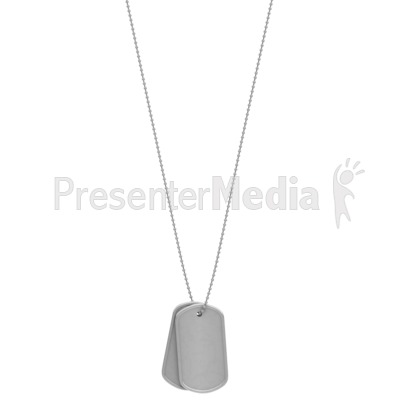 Military Dog Tags Hanging | 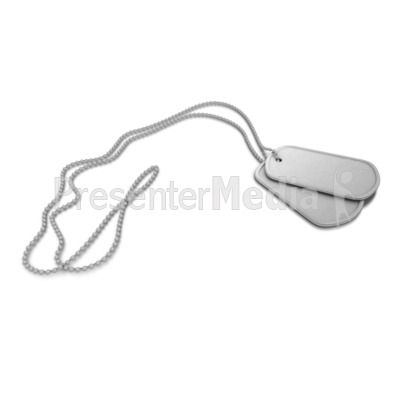 Military Dog Tags Laying Down |  Dog tags |  on military dog tags with. |
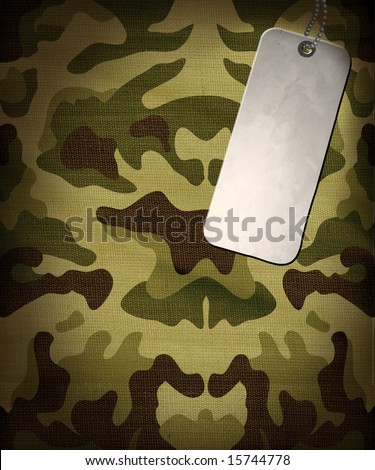 stock photo : Army camouflage |  Custom Dog Tags - Double |  A Pair of Dog Tags that You |  Dog Tags - Military dog tags |  Army Dog Tags By TattooJac On |
The Marine Corps was founded to serve as an infantry unit aboard naval vessels and was responsible for the security of the ship and its crew by conducting offensive and defensive combat during boarding actions and defending the ship's officers from mutiny; to the latter end, their quarters on ship were often strategically positioned between the officers' quarters and the rest of the vessel. Continental Marines manned raiding parties, both at sea and ashore. America's first amphibious assault landing occurred early in the Revolutionary War on 3 March 1776 as the Marines gained control of Fort Montague and Fort Nassau, a British ammunition depot and naval port in New Providence, the Bahamas. The role of the Marine Corps has expanded significantly since then; as the importance of its original naval mission declined with changing naval warfare doctrine and the professionalization of the naval service, the corps adapted by focusing on what was former secondary missions ashore. The Advanced Base Doctrine of the early 20th century codified their combat duties ashore, outlining the use of Marines in the seizure of bases and other duties on land to support naval campaigns.
 military dog tags |  military dog tags on black |  Military dog tag Index of / | 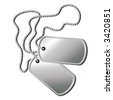 pair of dog tags or identity. |  FoxValleyTroops |
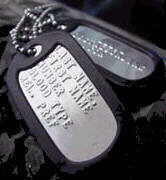 Military ID Dog Tags |  stock vector : military dog |  Dog clip art |  US Army Dog Tag on white |  Dog clip art |
No comments:
Post a Comment